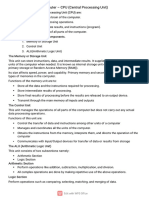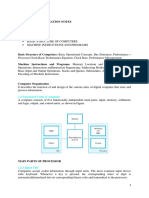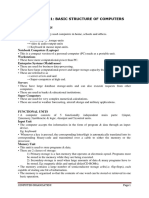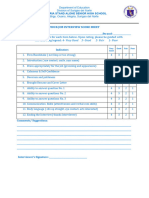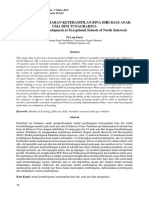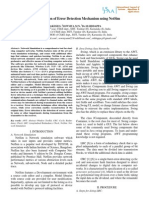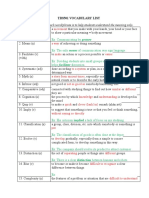0% found this document useful (0 votes)
6 views11 pagesUnit I.1 Introduction
The document provides an introduction to Computer Organization and Architecture, detailing the distinction between architecture (visible attributes to the programmer) and organization (implementation of features). It outlines the functions and structure of computers, including data processing, storage, movement, and control, as well as typical operating steps in executing instructions. Additionally, it lists references for further reading on the subject.
Uploaded by
337 Prasad ParjaneCopyright
© © All Rights Reserved
We take content rights seriously. If you suspect this is your content, claim it here.
Available Formats
Download as PDF, TXT or read online on Scribd
0% found this document useful (0 votes)
6 views11 pagesUnit I.1 Introduction
The document provides an introduction to Computer Organization and Architecture, detailing the distinction between architecture (visible attributes to the programmer) and organization (implementation of features). It outlines the functions and structure of computers, including data processing, storage, movement, and control, as well as typical operating steps in executing instructions. Additionally, it lists references for further reading on the subject.
Uploaded by
337 Prasad ParjaneCopyright
© © All Rights Reserved
We take content rights seriously. If you suspect this is your content, claim it here.
Available Formats
Download as PDF, TXT or read online on Scribd
/ 11














